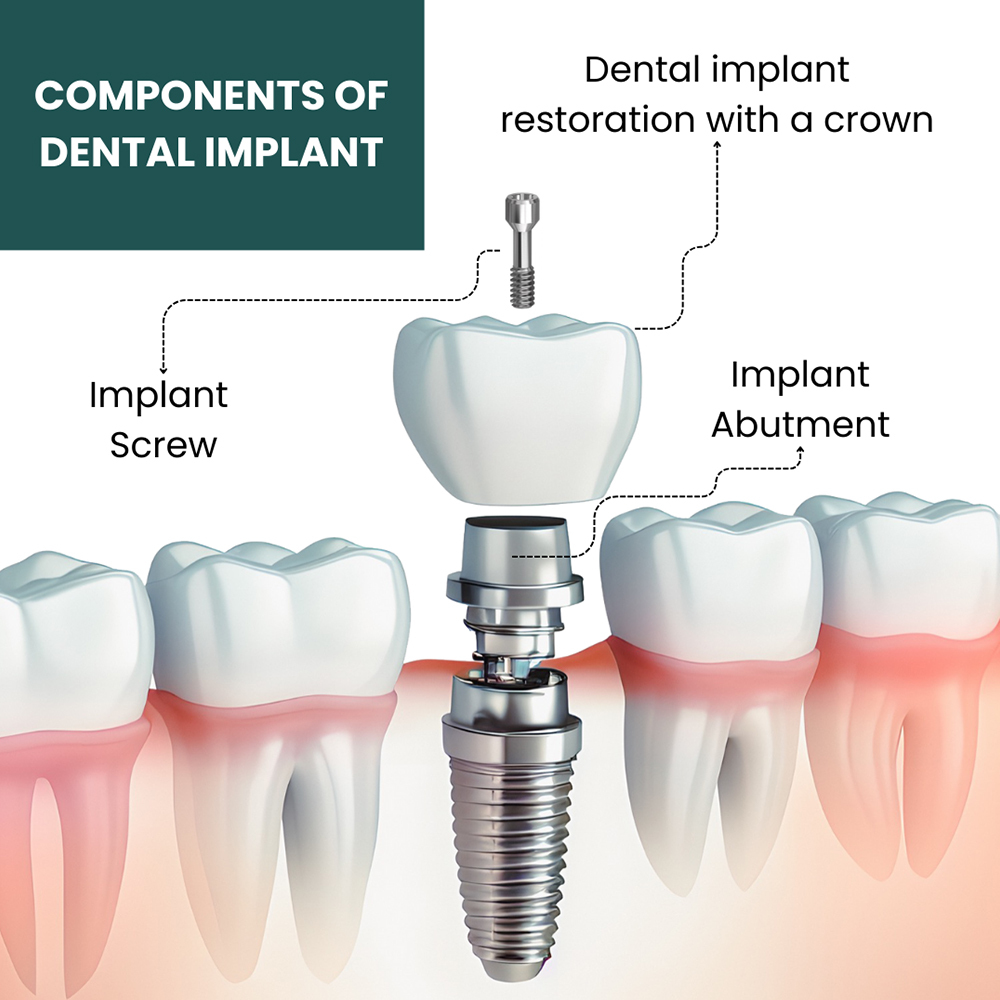Things about Dental Implants
Table of ContentsSome Ideas on Dental Implants You Should KnowThe Only Guide to Dental ImplantsGetting My Dental Implants To WorkSome Known Details About Dental Implants
are clinical tools operatively implanted into the jaw to restore a person's capacity to chew or their appearance. They offer assistance for fabricated (fake) teeth, such as crowns, bridges, or dentures. When a tooth is shed as a result of injury or illness, an individual can experience problems such as quick bone loss, malfunctioning speech, or adjustments to chewing patterns that lead to pain.
Structure of The Oral Implant System picking oral implants, speak to your dental supplier concerning the possible advantages and threats, and whether you are a prospect for the procedure. Things to think about: Your overall health is an important consider figuring out whether you are a great candidate for oral implants, how much time it will take to heal, and for how long the dental implant may remain in place.
Cigarette smoking may influence the healing process and lower the lasting success of the implant. The recovery process for the dental implant body might take a number of months or longer, during which time you usually have a short-term joint in location of the tooth. the oral implant procedure: Carefully adhere to the dental health directions offered to you by your dental company.
The Best Strategy To Use For Dental Implants
Implant failure can cause the need for an additional surgical treatment to fix or replace the implant system. Recovers the ability to chew Restores aesthetic look Aids keep the jawbone from diminishing because of bone loss Maintains the wellness of the surrounding bone and gum tissues Assists maintain adjacent (close-by) teeth steady Enhances lifestyle Damages to bordering all-natural teeth throughout dental implant positioning Injury to the surrounding tissues during surgical procedure, such as sinus perforation Injury throughout surgical treatment (for instance, crack of bordering jawbone) Poor function, such as feeling like the teeth do not bite together typically An experience that the tooth hangs or turning in position arising from a joint screw loosening up Implant body failing (looseness of the dental implant body) as a result of systemic infection, which might be extra likely in visit the website patients with uncontrolled diabetes because of neighborhood infection in bone and gum tissues sustaining the implant body because of delayed healing, which might be most likely in patients that smoke Trouble cleaning up the periodontals around the implant, causing inadequate dental health Untreated gum condition Post-surgical pins and needles because of nerve impingement or damage Always inform health and wellness treatment service providers and imaging specialists that you have dental implants prior to any kind of magnetic resonance imaging (MRI) or x-ray treatments.
FDA is not mindful of any type of negative events reported for MRI or x-ray procedures with oral implants. Dental implants systems are typically made from materials that adhere to international agreement criteria of the International Company for Standardization (ISO) or ASTM International. These requirements have details of what makes a secure material.
Oral implant systems are examined according to global agreement requirements. Biocompatibility screening, to show that bodily contact with the gadget does not create complications like irritation or sensitive reaction, is part of the analysis that helps ensure the materials in the dental implant system are risk-free and do not create damaging effects when implanted in individuals.

Dental Implants for Beginners
Some individuals are not eligible for dental implant surgical procedure. It is for oral surgeons to operate people with: severe illnessuncontrollable metabolic diseasebone or soft tissue condition or infectionIf these problems are settled, a person can have the surgery. Dental Implants. In, dental cosmetic surgeons avoid operating individuals with: If individuals with any one of the above go through oral implant surgery, there is a higher risk of the dental implant stopping working
Some people have a jawbone irregularity that stops sufficient bone for an implant from developing. In such cases, a cosmetic surgeon might require to execute a ridge adjustment. This entails raising the gum tissue to expose the location of deformed bone. The doctor will after that make use of a bone or bone substitute to repair and develop the location.
Dental implant surgical procedure is a personalized process. It's not the exact same for everyone. The complying with offers a basic introduction of what you can anticipate your dental practitioner, oral cosmetic surgeon, periodontist or prosthodontist to do: Put the implant surgically. Give you time to recover. Connect the post and last crown, bridge or browse around this site denture.
Next off, your doctor will meticulously position the oral implant into your jaw. Ultimately, your specialist will reposition your periodontals and close the cut with stitches. If your implant is near the front of your mouth, your dental practitioner will make a momentary tooth for you to use till you heal. This way, you won't have a void in your smile while you recuperate.
6 Easy Facts About Dental Implants Explained
Throughout the recovery phase, your jawbone needs to fuse to the dental implant. This procedure can take anywhere from 3 to 9 months.
Once your implant heals, your dental expert can connect the abutment (small connector blog post) and your final reconstruction (crown, bridge or denture). This usually takes about one hour to finish and may require a 2nd small surgical procedure. You shouldn't really feel any discomfort throughout your dental implant procedure since your provider will certainly use medicine to numb your periodontals.